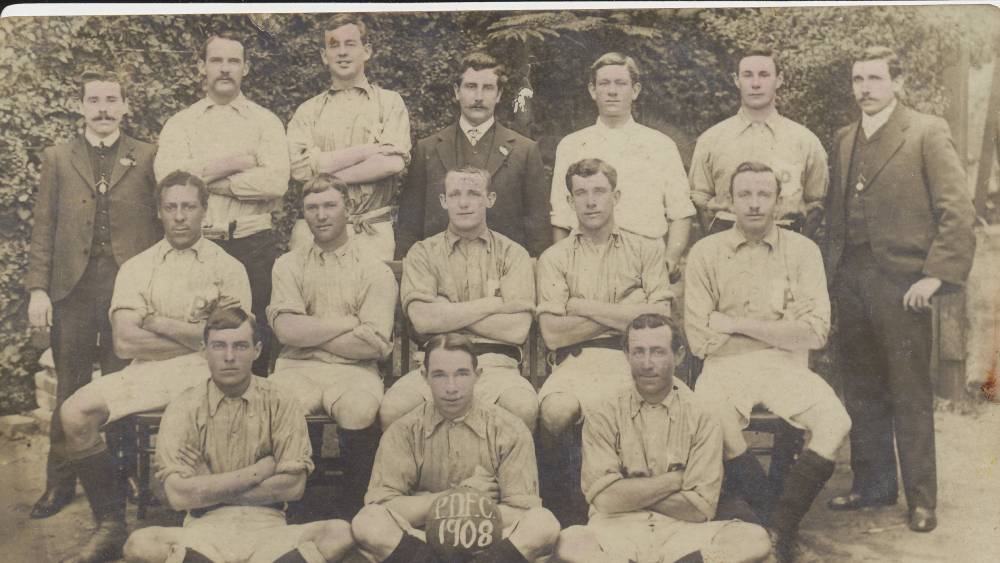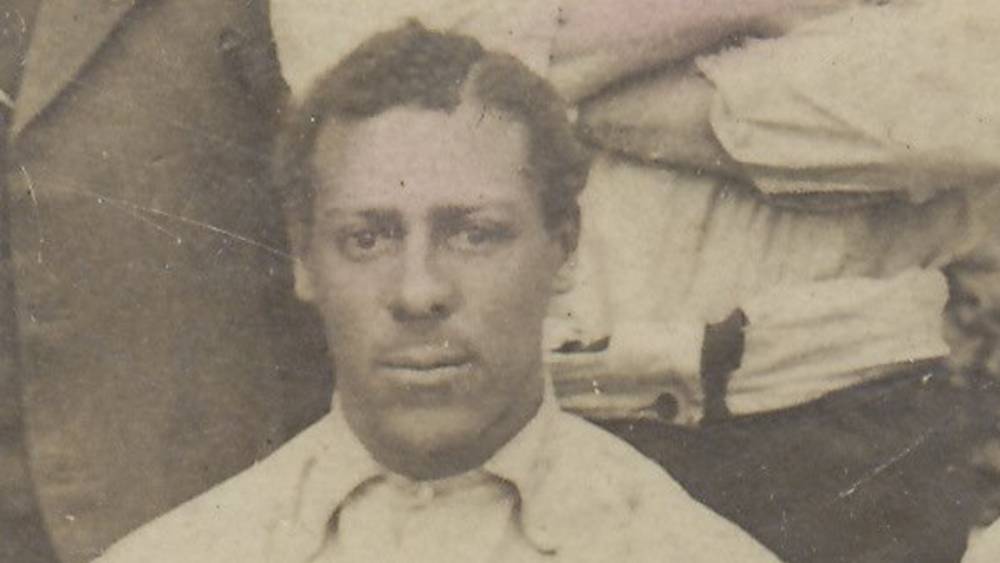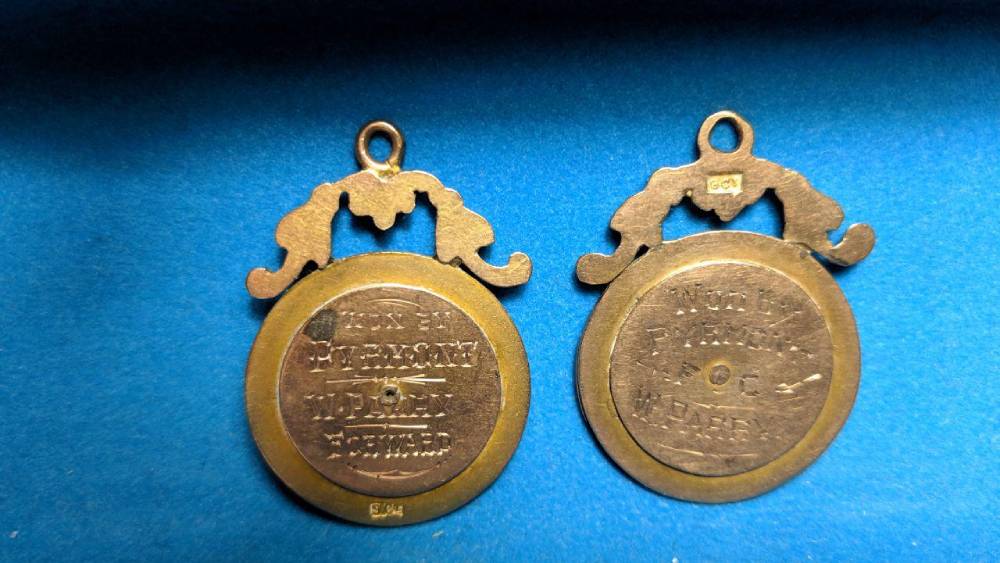Controversy as Villa keeper handed second yellow for shootout crowd taunting... but isn't sent off
Emi Martinez was saved by a new rule that resets yellow cards at the end of extra time, meaning his second yellow for taunting…

It is one of the biggest Australian club football games in years. The 1908 New South Wales Gardiner Cup final pits Glebe, the league champions, against Pyrmont, league winners for the past three seasons.
Pyrmont’s supporters and players are drawn from the industrial and maritime heartland of Sydney. With links back to the Pyrmont Rangers club established in 1885, they are the best-supported club in the country.
Glebe run out onto a damp Sydney Cricket Ground in maroon jerseys, Pyrmont in blue. Pyrmont’s stars include forwards Bill Carey and Richard ‘Wal’ Parry, but their x-factor is their speedy black winger, Joe Davidson.
The players line up in front of the pavilion and give the Governor of New South Wales three cheers.
A band of pipers has been revving the crowd into a frenzy. By kick-off, according to one newspaper, the spectators are ‘making a deuce of a row.’

It doesn’t take long for Joe Davidson to terrorise Glebe’s defence. One of his crosses finds Carey who scores the game’s opening goal. Pyrmont go 2-0 up soon after when Carey heads in another Davidson cross. Wal Parry scores the Blues’ third just before halftime and Pyrmont go on to win 4-0.
The Arrow said of Davidson, ‘No cleverer outside right play has been seen in Sydney for at least two years’, while the Sydney Sportsman told its readers, ‘the hero of the day was Pyrmont’s outside right, Davidson, whose fine line work was responsible for every one of Pyrmont’s goals.’
Davidson’s skin colour does not go unnoticed. The Evening News reports: ‘Davidson, who is black, was getting a lively time of it from the crowd, and cries of “Go on Coon, buck in!” were pretty frequent.’
Joe Davidson was born in Brisbane in 1884. His mother was English and his father a seaman from Jamaica. By 1896 the family had moved to Pyrmont, within earshot of the tugboats of Sydney Harbour.
Football was the dominant local code and Davidson soon displayed a talent for the game. He played in Pyrmont’s third grade team in his teens and in 1905 made his first-grade debut.
Davidson played in his first Gardiner Cup Final in 1906. The match was played before a crowd of 7,000 paying customers and many more non-paying ones at the Epping Racecourse ground.
Pyrmont lost but The Sunday Sun reported that ‘Davidson put in some very fine centres during the game. Nearly every match this player figures in he shows improved form.’
After the 1907 season that saw Pyrmont win the league and finish cup runners up, Davidson proved his versatility by singing beautifully at the end of season function. He also served on the club’s committee and was on the New South Wales football council.

1908 was the year of the memorable SCG Gardiner Cup final triumph. Davidson earned selection in the Sydney Metropolitan team that defeated Newcastle 2-1 at the Sydney Sports Ground that year.
Davidson also represented Sydney against the touring Western Australian team in 1909. That year his club side won another league title and were runners up in the cup. The Star reported, ‘Good, speedy, and clever wingmen are extremely rare in Sydney at the present time, the best being undoubtedly Allen (Sydney) and Davidson (Pyrmont).’
Davidson’s career took a nosedive in 1910 when the Pyrmont club disbanded due to a dispute with the state association. Missing the combinations with his teammates, he only played a handful of senior matches for different clubs in succeeding years.
Perhaps to make up for lack of game time, Davidson became a referee. He was a linesman in Sydney’s khaki cup final of 1915.
For most of his adult Davidson worked as a contract wharf labourer around Darling Harbour.
In August 1917, waterside workers joined railway workers in what would become Australia’s biggest strike. It was a tough time for many families. Shortly after the government broke the strike, Davidson enlisted in the AIF.


Davidson arrived on the Western Front near Ville-sur-Ancre, France, in May 1918.
A week after he entered the trenches, his 18th Battalion came under heavy fire and were shelled with mustard gas. A few days later, the 18th’s military diary noted that 2,000 artillery shells had landed on their position. It was a precarious existence.
In July, Davidson was medically discharged after breaking his wrist in an accident. The casualty form sates: ‘injured accidentally – soldier not to blame.’ Was it a football injury?
Davidson returned to Australia in December 1918.
In 1929 Davidson played in a benefit match for Illawarra football identity, “Snowy” Richards.
Led by the Corrimal Citizens’ Band, the players marched in procession down the town’s main street to Memorial Park.
The game finished 3-3 and at the post-match function Davidson delighted the audience with a number of songs.
Davidson died in 1947 after suffering a seizure while loading wheat on a ship in Sydney Harbour.
I haven’t found any obituaries of Joe, but the following quote by a journalist from the Arrow in 1920 shines a light on his playing career: ‘At Wentworth Park I ran across Joe Davidson, recently returned from active service. With Pyrmont he was the fastest outside right that ever dribbled a round ball.’
Authors note: Photographs courtesy of Lindsay Parry, grandson of Wal Parry, Joe Davidson’s team mate at Pyrmont FC. Wal Parry also served in the AIF but did not survive the war. He is buried in Marcinelle Community Cemetery in Belgium.
This article is an extract from a longer piece originally published in Neos Osmos